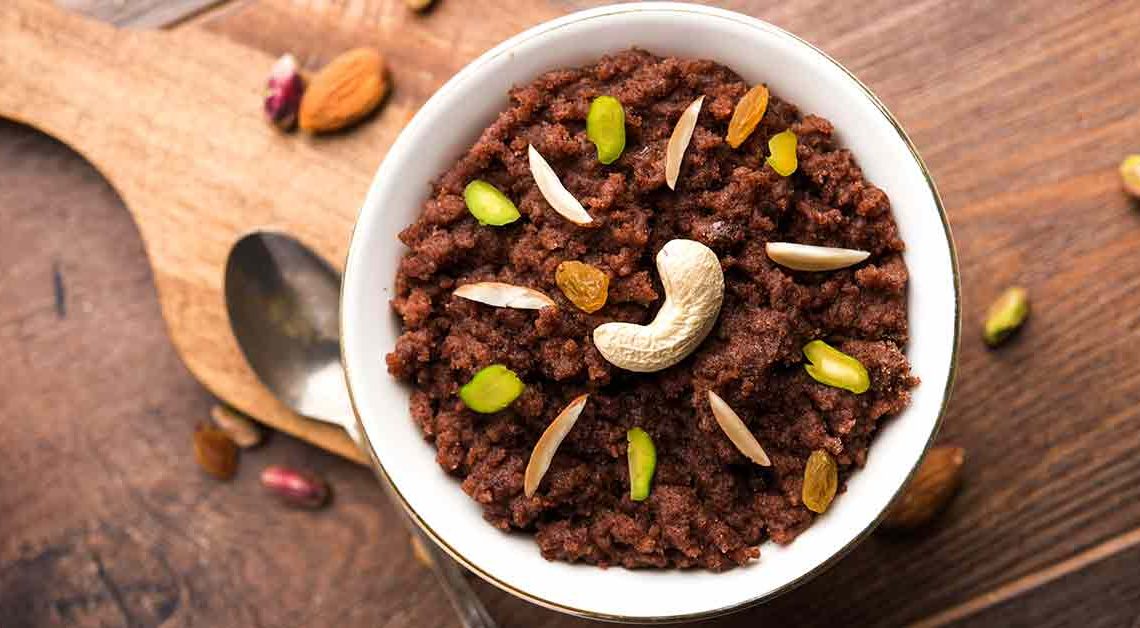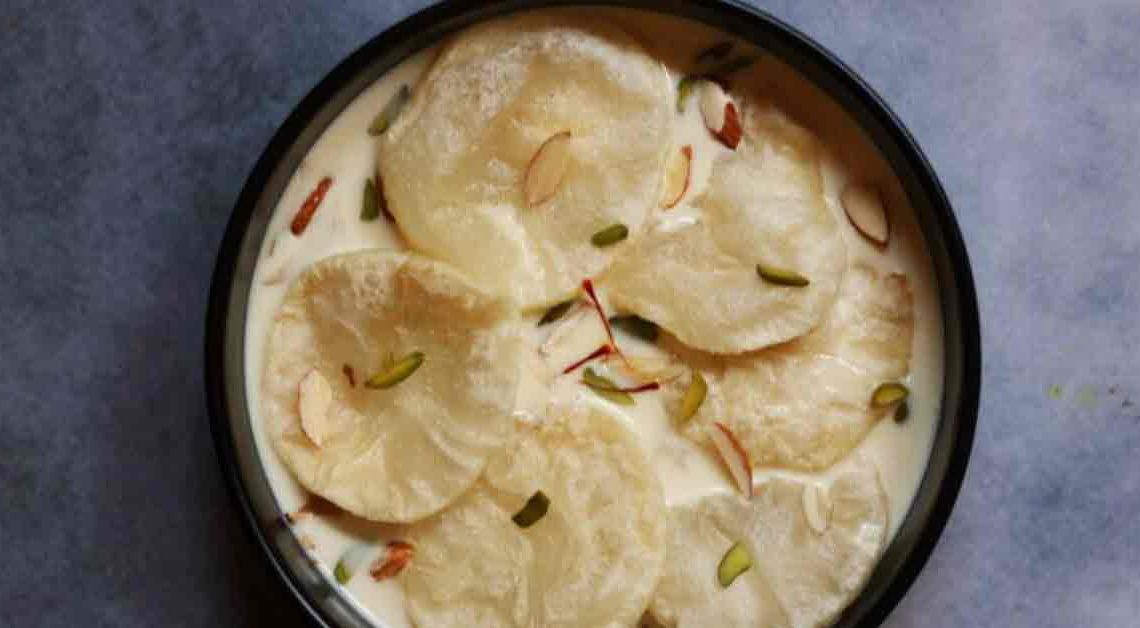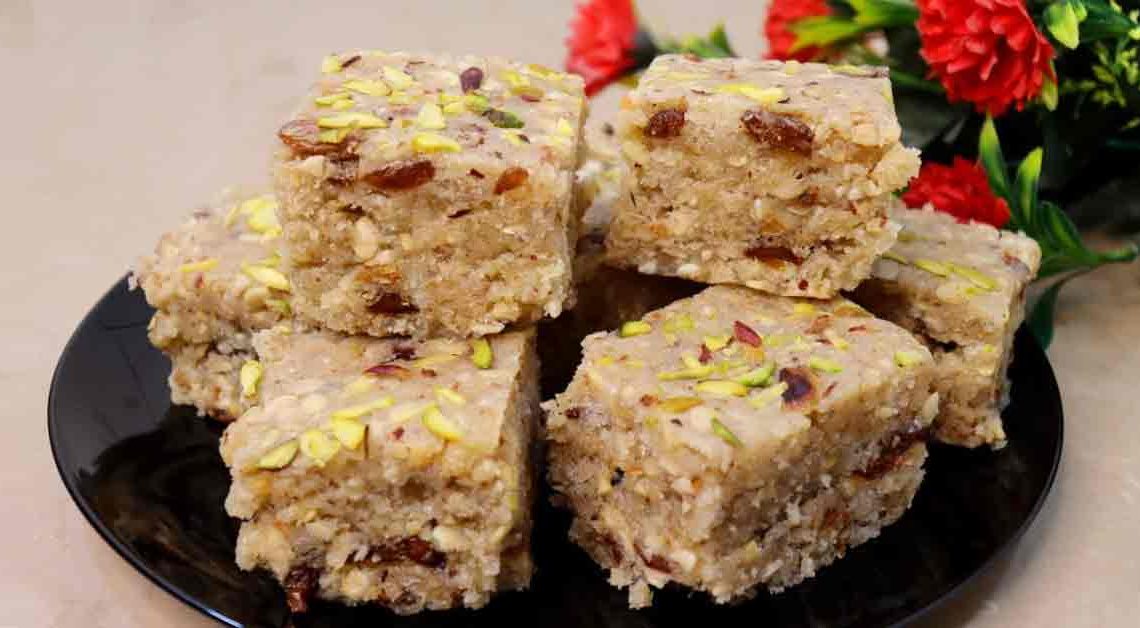A Nutritious Dessert You’ll Crave: Ragi Halwa

Are you ready to embark on a culinary journey that’s as nutritious as it is delicious? Welcome to our Mithainama, where we’re about to unlock the secrets of a timeless Indian dessert: Ragi Halwa.
Ragi, also known as finger millet, has been a hidden gem in the world of grains for centuries. It’s celebrated for its exceptional health benefits and earthy flavor. In our quest for innovative and wholesome recipes, we stumbled upon this sweet delight, which combines tradition and modern sensibilities.
Ragi Halwa is a mouthwatering treat that transcends boundaries. As you take your first bite, you’ll be captivated by the rich aroma of roasted ragi, ghee, and cardamom. But this dessert is more than just a symphony of flavors – it’s a nutritional powerhouse! Ragi is packed with essential nutrients like iron, calcium, and fiber, making this halwa the ideal fusion of indulgence and health.
So, let’s dive into the world of Ragi Halwa, where tradition meets innovation, and where taste meets nutrition. Your taste buds are in for a memorable treat!
Origin of Ragi Halwa
Ragi Halwa is a traditional Indian dessert that has its roots in the southern part of India, where ragi (finger millet) has been a staple grain for centuries. Ragi is believed to have originated in Africa but has been cultivated in India for thousands of years. The exact historical origins are not well-documented, but it is deeply embedded in the culinary heritage of South India.
Ragi itself has been a vital part of the South Indian diet, especially in states like Karnataka and Tamil Nadu. It is a hardy crop that can thrive in various climatic conditions, making it an important food source for many people, particularly in regions where rice and wheat may not grow as easily.
It combines the nutritional benefits of ragi with the sweetness of a traditional halwa, making it a comforting and wholesome dessert. Over time, different regions and households have put their own twists on the recipe, incorporating variations like the addition of nuts, cardamom, or saffron for enhanced flavor.
History of Ragi Halwa
The history is intertwined with the rich culinary heritage of India, particularly in the southern regions. Ragi, or finger millet, is an ancient grain that has been cultivated in India for thousands of years. Its origins can be traced back to Africa, but it has been a staple food source on the Indian subcontinent for centuries. Ragi is known for its hardiness, adaptability to various climates, and remarkable nutritional content, making it a valuable crop.
It has been a beloved dish in South India, where ragi has been a dietary staple for generations. Over time, it evolved as a way to celebrate the nutritional benefits of ragi while satisfying the Indian sweet tooth. Different regions and households have added their own unique touches to the recipe, creating variations that have stood the test of time.
In recent years, as people have become more health-conscious, Ragi Halwa has gained popularity not just in India but also globally. Its history is a testament to the enduring appeal of combining taste and nutrition in a single, delectable dish.
Cultural Significance
Ragi Halwa holds significant cultural and culinary importance in India, particularly in South India. Its cultural significance is intertwined with the historical, dietary, and regional aspects of the country’s diverse food traditions:
Traditional Cuisine: Ragi is deeply rooted in the culinary traditions of South India, where it has been a staple grain for centuries. It is a classic dessert that showcases the region’s culinary creativity and the ingenious use of indigenous ingredients.
Festive Occasions: It is often prepared and served during religious and festive occasions in South India. It’s a symbol of hospitality and warmth, offered to guests and relatives during festivals, weddings, and other celebrations.
Regional Identity: Ragi is closely associated with the identity of South India. It’s not just a grain; it’s a symbol of the region’s unique food culture, and is one of the many expressions of this identity.
Where is Ragi Halwa Famous?
Ragi Halwa is particularly famous and popular in the southern regions of India, such as Karnataka, Tamil Nadu, Andhra Pradesh, Telangana, and Kerala. These states have a long-standing tradition of using ragi as a staple grain in their cuisine, and is a cherished dessert in this part of the country. It’s commonly prepared and savored in households, restaurants, and during various cultural and religious festivals.
Karnataka: Ragi, also known as “finger millet,” is a dietary mainstay in Karnataka. Ragi Halwa is a beloved dessert, and Karnataka is known for its variations of the dish, which may include ingredients like jaggery, coconut, and cardamom.
Tamil Nadu: It is a cherished sweet dish in Tamil Nadu as well. It’s prepared with slight regional variations, and it’s often enjoyed as a wholesome treat, especially during festivals and special occasions.
Andhra Pradesh and Telangana: While these states are more famous for their spicy cuisine, Ragi Halwa still finds its place on the dessert table. It’s relished as a nutritious and delightful end to a meal.
Interesting Facts and Trivia
Ancient Grain: Ragi, the primary ingredient in Ragi Halwa, is one of the oldest cultivated grains in the world, with a history dating back thousands of years. It is believed to have been grown in Africa and then introduced to India, where it has been cultivated for centuries.
- Ragi is a nutritional powerhouse, known for its high content of calcium, iron, fiber, and other essential nutrients. Ragi Halwa not only satisfies the sweet tooth but also provides valuable nutrients.
- Ragi has experienced a resurgence in popularity due to its health benefits and climate-resilient properties. It is considered a sustainable crop, making it an essential grain in the fight against food security challenges.
- In some traditional Indian medicinal practices like Ayurveda, ragi is used for its therapeutic properties, and is seen as a therapeutic sweet for its health benefits.
- Ragi contains valuable antioxidants, such as quercetin and tannins, which help protect against cell damage and oxidative stress.
- Chefs and food enthusiasts have been experimenting with Ragi Halwa, creating fusion desserts like Ragi ice cream, Ragi cake, and even Ragi Laddu.
Did You Know?
Ragi Halwa, a delectable Indian dessert, offers a delightful way to enjoy the numerous health benefits of ragi, or finger millet. It is not just a delicious treat; it’s also a nutritious powerhouse. This wholesome dessert is packed with benefits, such as:
- Ragi is an excellent source of essential nutrients like calcium, iron, fiber, and amino acids. Consuming Ragi Halwa can help boost your nutrient intake.
- Ragi is naturally gluten-free, making a perfect choice for those with gluten sensitivities or celiac disease.
- The high fiber content in ragi supports digestive health and helps prevent constipation, making it an excellent choice for those seeking improved gut function.
- Ragi is a complex carbohydrate that provides a steady release of energy, making a great option for sustained vitality throughout the day.
- Its rich calcium content contributes to strong bones and teeth, especially beneficial for growing children, pregnant women, and the elderly.







